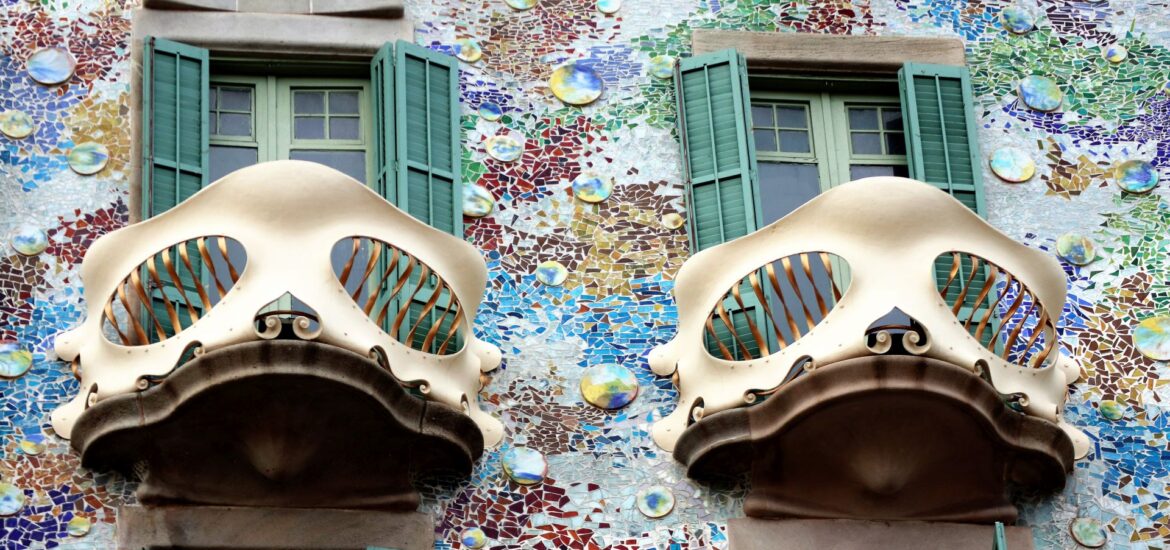A city trip to Barcelona, one of the most attractive cities in Europe, has been on my bucket list for a long time. As there are direct Ryanair flights from Podgorica to Barcelona, even in winter, we recently booked a 5-days trip, i.e. 3 full days for sightseeing.
Of course, we didn’t have enough time (and energy) to see all the attractions Barcelona has to offer, and thus we selected the most important ones: Gaudi’s works Sagrada Familia, Casa Battlo and Park Guell, then Las Ramblas and finally the old town (Ciutat Vella) with the Cathedral and the Gothic Quarter.
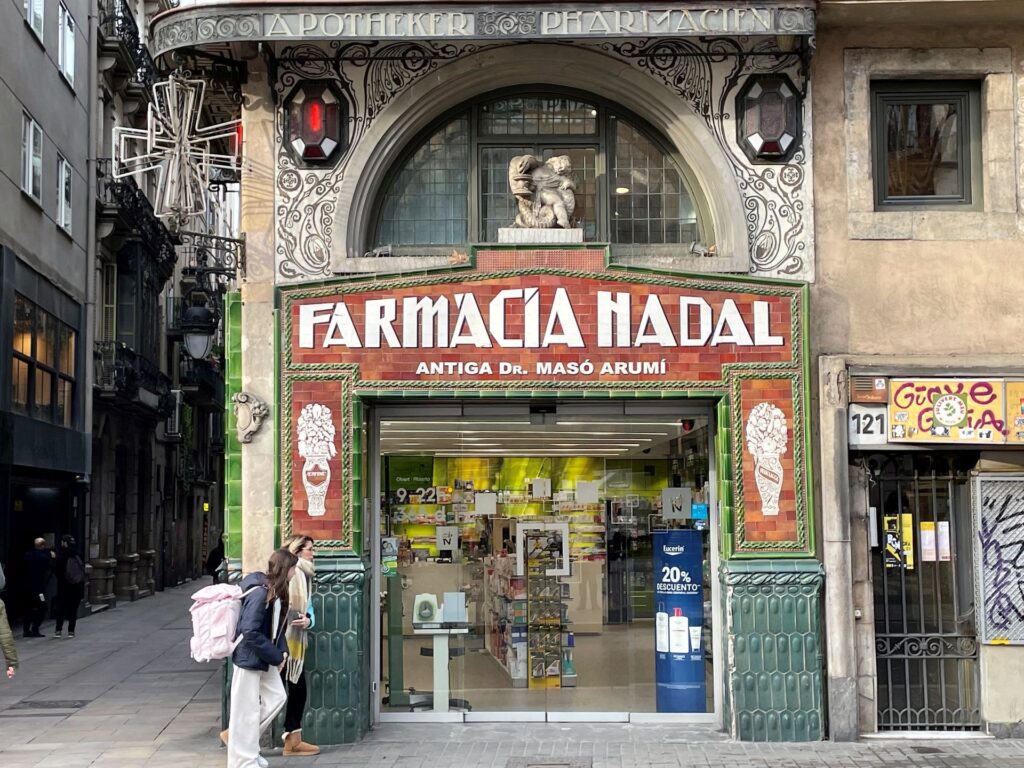
As our hotel was located close to Las Ramblas, we used the first evening to make a stroll through this 1.2 km long pedestrian boulevard with many green areas, restaurants, market stalls and street traders. It was crowded, the weather was nice, the atmosphere was cozy and we had delicious tapas for dinner.
Back at our hotel, we bought online tickets with a time slot for the main attractions, as even in February, the city has to cope with “overtourism”. Can you imagine that Barcelona is visited by more than 30 million people each year? That is probably also one of the reasons why the entrance tickets for Gaudi’s works are so expensive (Sagrada Familia € 34.00, Casa Batllo € 35.00 and Park Guell € 13.00).
But who was Gaudi?
Antoni Gaudi was born in 1852. He received his architectural degree in 1878 and he became one of the top exponents of Modernism, a style that emerged in Catalunya as a reaction to industrialization. In other parts of Europe, this trend was called Art Nouveau or Jugendstil.
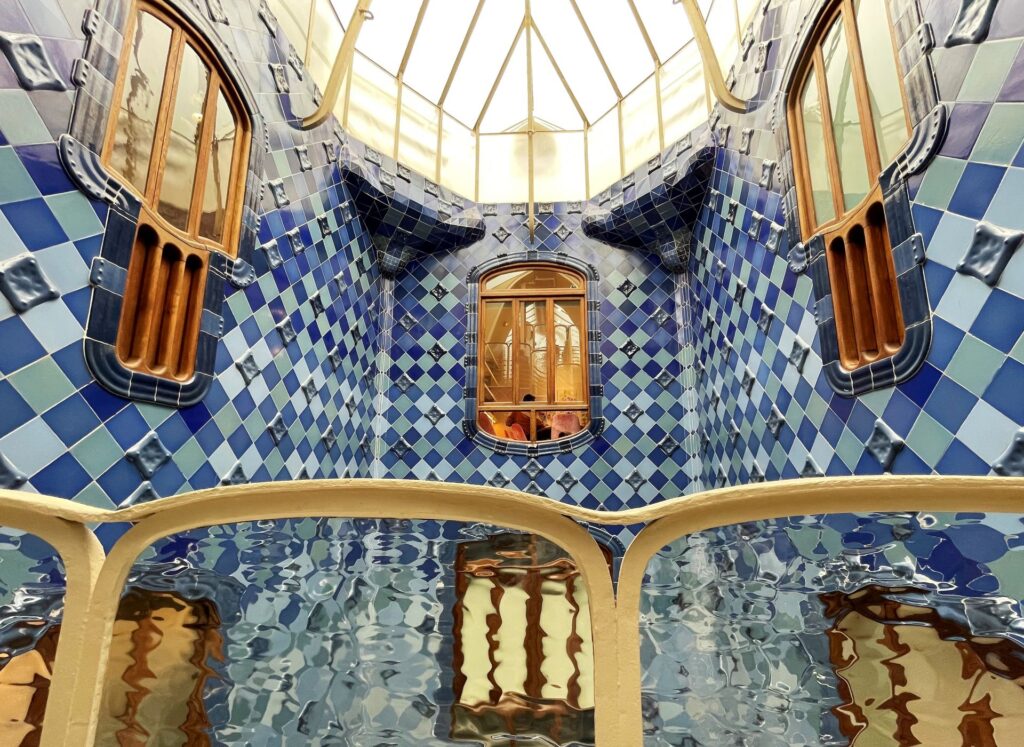
No doubt, Gaudi’s work – almost 2000 objects – has greatly influenced the face of Barcelona and his stunning creations can be found all over the city. His most famous works are: Sagrada Familia, Casa Mila, Casa Battlo and Park Guell.
Gaudi was a strange person: Over time he went from being a young dandy who frequented theatres and concerts to neglecting his personal appearance, eating frugally and distancing himself from social life. He never married, he didn’t have any relationships and he refused being photographed. As a matter of fact, he devoted himself more and more fervently to a religious and mystical sentiment.
Gaudi died in 1926 after being knocked down by a tram while making his way to the Sagrada Familia. At that moment nobody recognized him and only later he was taken to the hospital, where he died.
Our program
Now the adventure could start! How to spend three days in Barcelona? It was not easy to make a choice, but we made the following program:
Day 1: Exploring Las Ramblas and surroundings, visiting Gaudi’s Casa Batllo
Day 2: Visiting Sagrada Familia, walking tour through Ciutat Vella and the Gothic Quarter, visiting the Cathedral
Day 3: Visiting Park Guell, round trip with the Hop-on-Hop-Off bus, shopping.
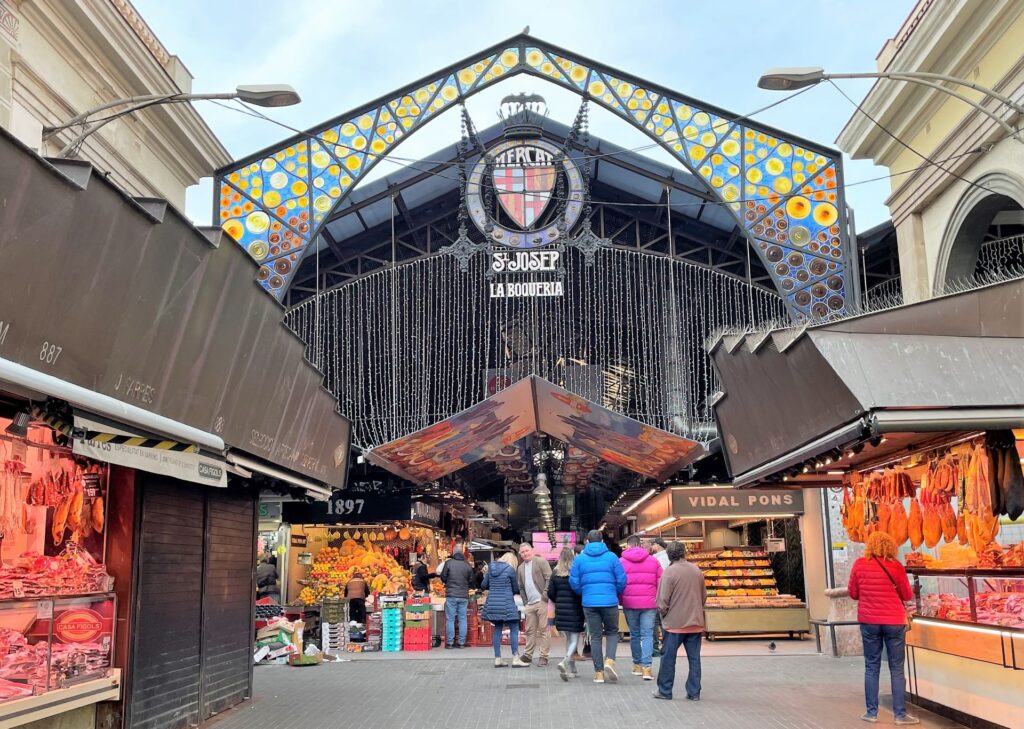
Day 1:
Las Ramblas
Las Ramblas is the most famous walkway in Barcelona. The boulevard is always crowded with tourists, but also with inhabitants of Barcelona. It stretches between the Placa de Catalunya, a huge oval square with many sculptures, fountains and a beautiful park, and the old port with the column of Columbus. It is said that this was the place where Columbus got ashore after having discovered America.
What did we see along Las Ramblas? First of all, Gran Teatro de Liceu, the opera house of the city. The building was destroyed by a fire in 1994, but it was restored and now it is one of the biggest theatres of the world, with 3,500 seats.
La Boqueria is a nice market that has been here for hundreds of years. It offers a wide variety of seafood, wine, fruit and vegetables. We enjoyed the colorful spectacle of the market stalls and bought a snack for lunch.
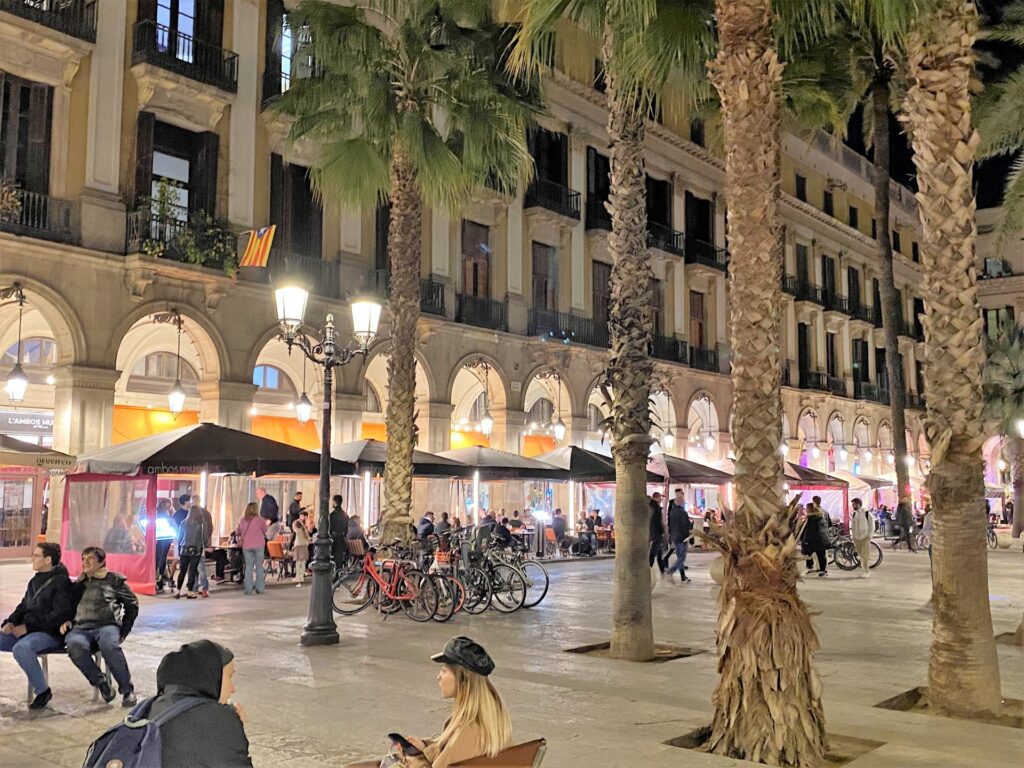
Placa Real has been a place for people gathering already from the Middle Ages. In its present form, it was constructed in the 19th century with beautiful lanterns designed by Gaudi, many high palm trees and attractive buildings with arcades for shade. We found the square particularly attractive in the evening, when pubs and restaurants are crowded and cozy.
Casa Batllo
As I read in several travel books that Casa Batllo is one of Gaudi’s most beautiful creations, we were quite curious what a visit of this building would offer us. Located in the heart of Passei de Gracia, Barcelona’s golden avenue, Casa Battlo is considered to be Gaudi’s most complete work, a jewel of Modernism.
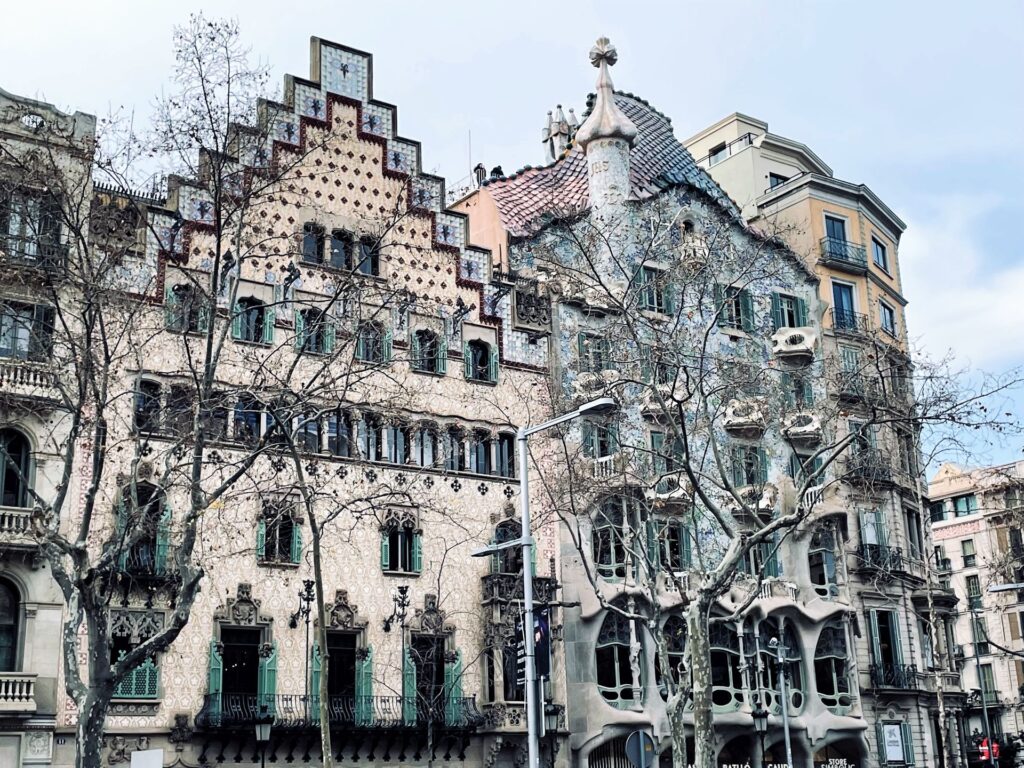
Gaudi restored the house, which was owned by the industrial Josep Batllo, between 1904 and 1907. He carried out a complete re-styling of the exterior, main floor, patio and roof. The old façade was transformed into a decorative, modernistic expression of a “moving” façade. Gaudi adorned Casa Batllo, like many other buildings, with colored tiles arranged in mosaic patterns.
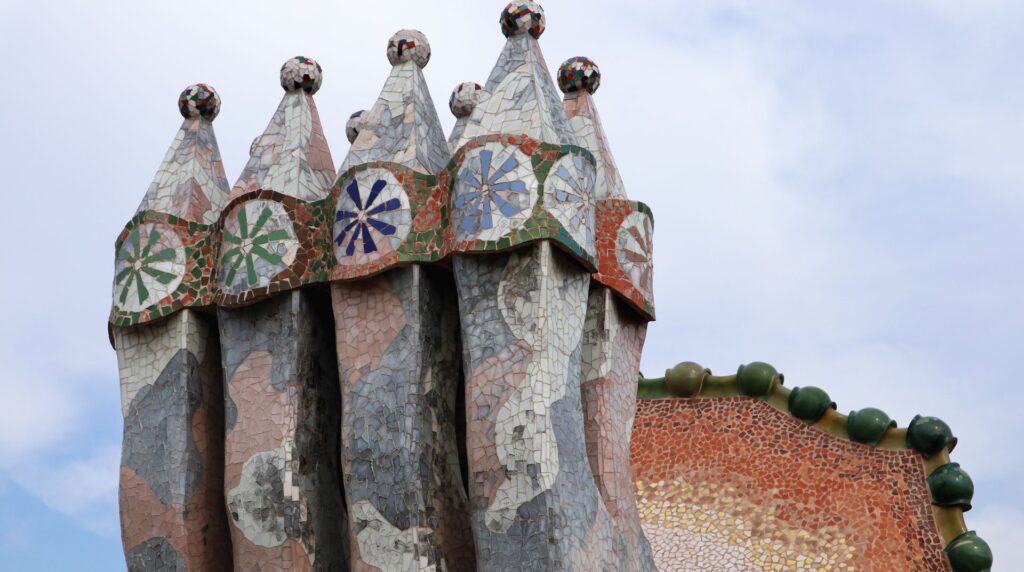
I found Casa Batllo a dream-like construction; it is hardly possible to imagine that this was a real family home!
Day 2:
La Sagrada Familia (Basilica of the Holy Family)
This is the most famous of Gaudi’s works. The design was inspired by Gothic and Byzantine cathedrals. The foundation stone was laid in 1882 and Gaudi spent the last 10 years of his life working on this project. But now, more than 140 years later, it is still years away from completion. No wonder, creating this master piece to its last detail requires enormous funding, which has slowed down the realization of this structure. By the way, it will be the highest church in the world (172 meters). No need to say that Sagrada Familia is a UNESCO World Heritage site.
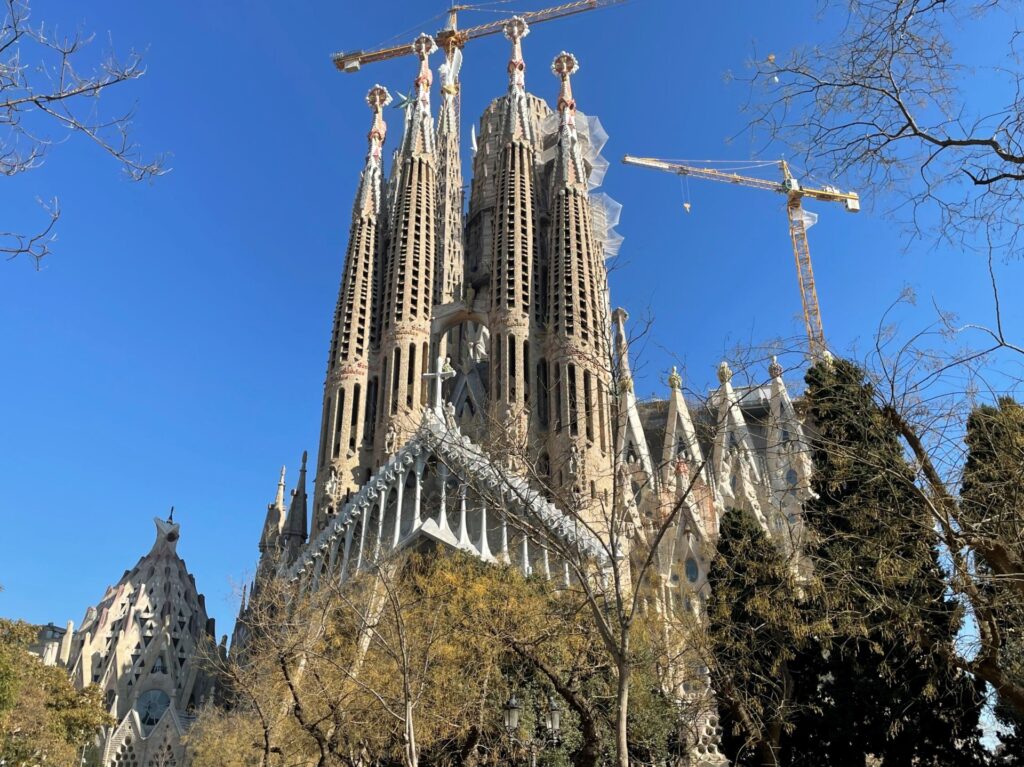
But what is so special about this Basilica? It was planned by Gaudi so as to let the reflected sunlight illuminate various aspects of Christ’s life. This feature makes the interior of Sagrada Familia a miracle of colors. Taking into account the complete absence of straight lines in the whole structure, I wonder how could Gaudi know the exact direction of the sunlight through the windows?
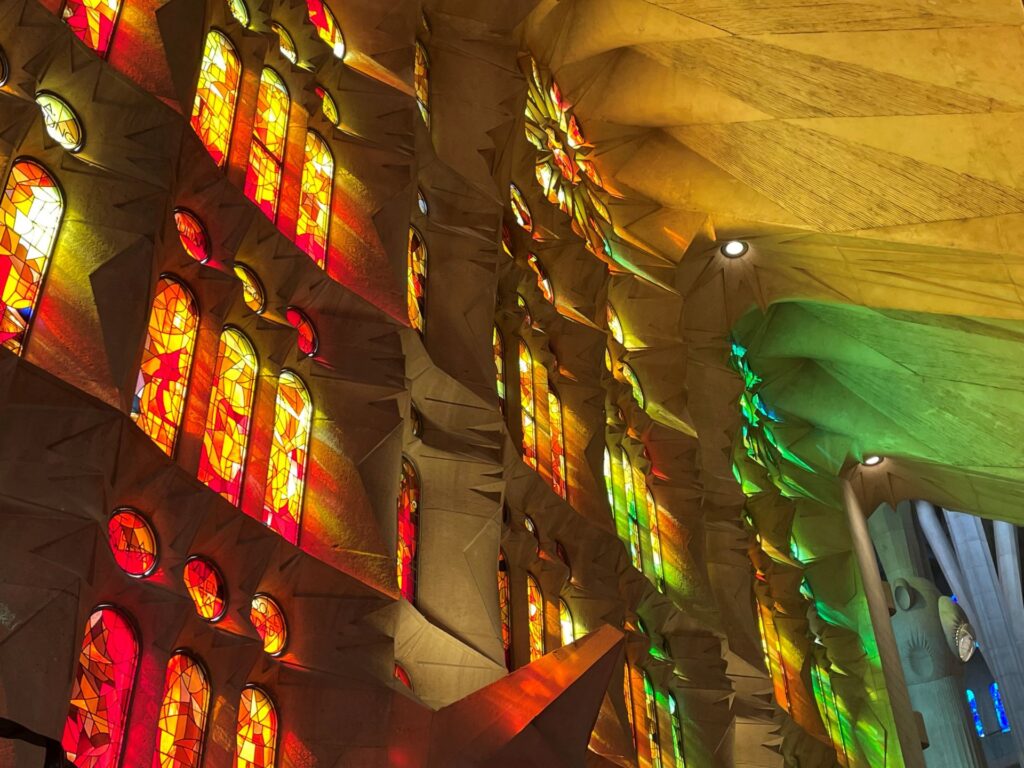
Gothic Quarter and the Cathedral
We walked through the Gothic Quarter in the late afternoon. This is the oldest part of the city – including ancient Roman walls and medieval buildings all connected by narrow, winding streets full of pubs and little shops.
The Gothic Cathedral (under reconstruction) was absolutely worth a visit (admission fee € 9.00).
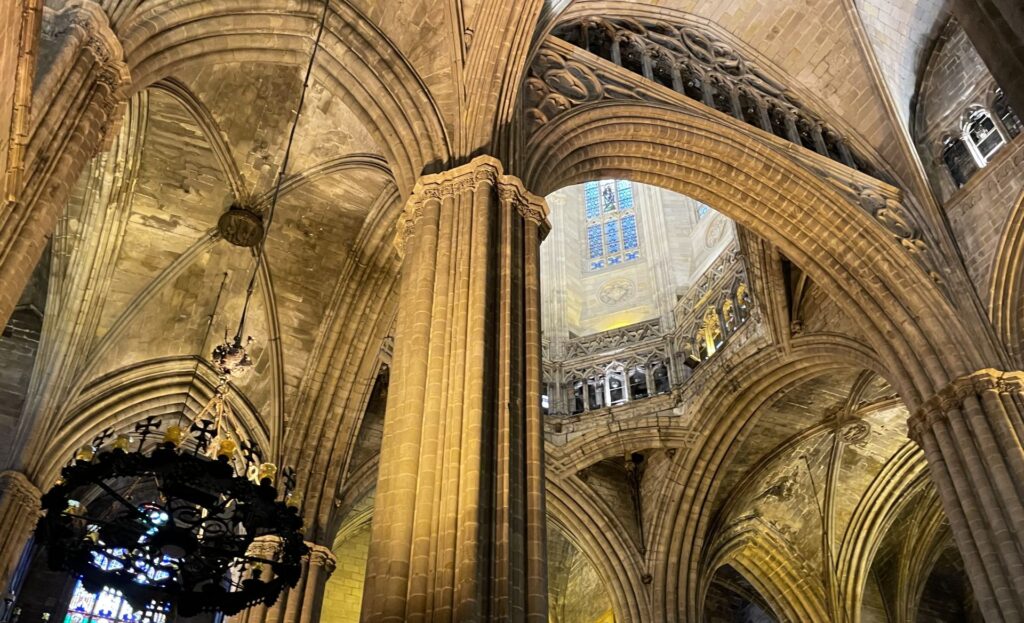
This Cathedral, officially called the Catedral de la Santa Creu i Santa Eulalia, was built between the late 13th and early 15th century, but only in 1889 the frontal façade was completely finished.
I found the cathedral – Gothic, simple and dark – very impressive. A contrast with the colorful Modernism that characterizes Barcelona!
Day 3:
Park Guell
I had very high expectations of Gaudi’s Park Guell, a huge garden complex designed and built by Gaudi between 1900 and 1914. Maybe I was a bit disappointed, as it was so crowded that you could hardly see all the beautiful works of art made by Gaudi. But the garden itself was wonderful and it was a great experience to make a nature walk in the heart of Barcelona.
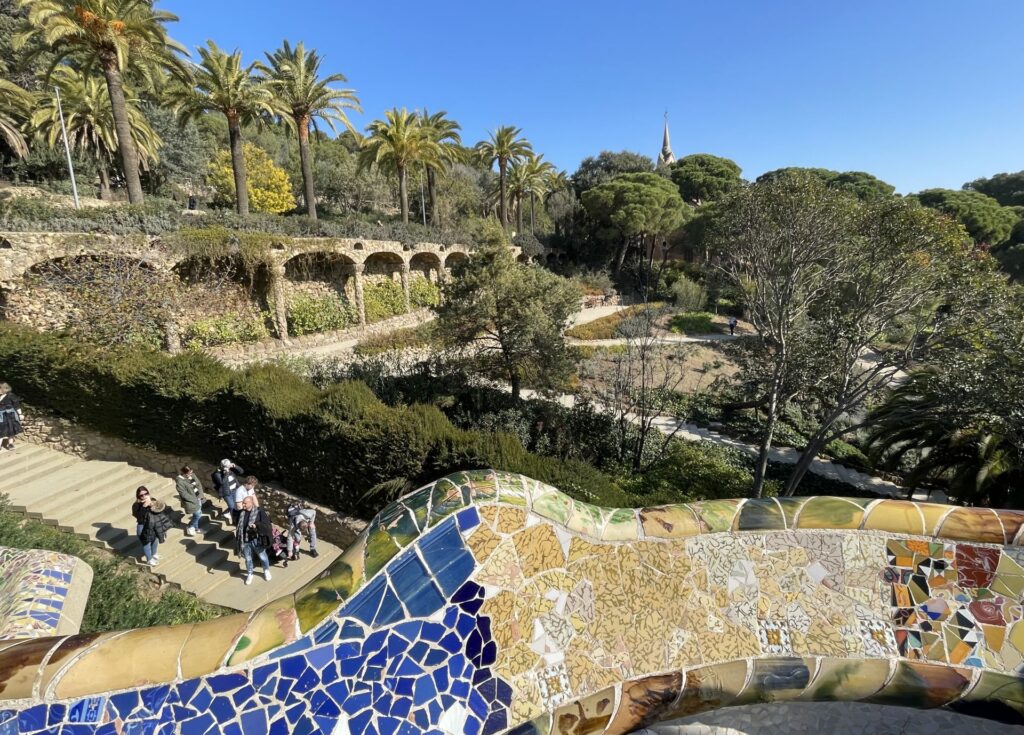
By the way, the Park’s history is quite impressive: Count Eusebi Guell, a rich industrial, lover of art and architecture, commissioned Gaudi with the development of a lush natural park in Barcelona. This park should contain a high-profile residential community of 60 houses. And Gaudi planned something that would inspire generations to come.
The construction started in 1900. Unfortunately, Guell stopped the works in 1914, due to World War I. His heirs gave the land to the city of Barcelona and today, Park Guell receives 12 million tourists per year.
Park Guell has been a UNESCO World Heritage site since 1984 and it houses attractions like the Dragon Stairway, the Hypostyle Room and the Porter’s Lodge.
Hop-on-Hop-off bus
If you don’t want to spend your days walking around, a round trip with the Hop-On-Hop-Off bus is a good solution (one-day-ticket € 30.00) We took the Blue Line, which makes a tour along numerous characteristic buildings from the period of Modernism. As the weather was sunny and warm, we could enjoy the tour from the open roof deck.

And of course, we also had some time for shopping. Shopping Mall Mare Magnum in the old port is very popular with tourists, but El Cort Ingles on Placa de Catalunya appeared to be a place where we could find all kinds of products, clothes, etc.
Our visit to Barcelona passed all too soon. There are many other things to see – it is just too much for a few days. But taking into account that I have visited many places in Europe, I can say that Barcelona is one of the most beautiful cities!
